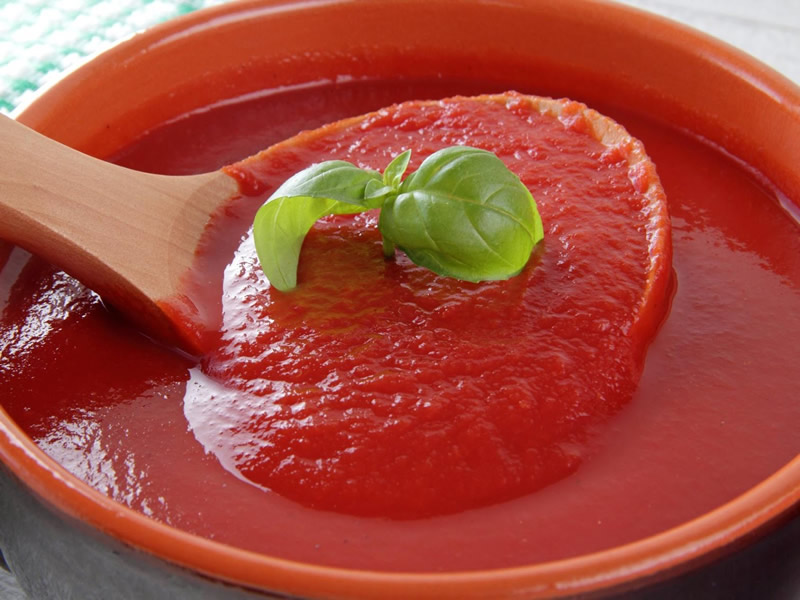Purple ketchup was a unique food product that gained significant attention and popularity in the early 2000s. Introduced by the H.J. Heinz Company, the colorful condiment aimed to appeal to children and bring a fun twist to traditional ketchup. However, despite its initial success, purple ketchup eventually faded into obscurity, leaving many to wonder about its rise and fall.
Purple ketchup was launched in 2001 as part of Heinz’s EZ Squirt line, which also featured other unconventional ketchup colors such as green and blue. This bold move was primarily driven by the desire to engage children and make mealtime more exciting. With brightly colored packaging and a whimsical design, purple ketchup quickly caught the attention of kids and parents alike.
The product’s vibrant purple hue was achieved by using natural food dyes, without compromising the original ketchup flavor. Heinz’s marketing strategy predominantly targeted families with children, emphasizing the product’s playfulness and creativity. The colorful condiment could be used for regular ketchup applications like burgers and hot dogs, inspiring kids to add a colorful twist to their meals.
Purple ketchup gained significant media coverage, generating a buzz across various platforms. It became a popular topic of discussion on television shows, radio programs, and even in school lunchrooms. The novelty factor played a key role in capturing the imagination of consumers, and sales of the purple ketchup soared in its initial year.
While purple ketchup may have seemed like a passing trend, its popularity continued to grow. Heinz reported selling over 10 million bottles of purple ketchup within the first seven months of its launch. The success prompted the company to add more colors to the EZ Squirt line, including mystery colors that changed hue after being squirted.
The introduction of purple ketchup also sparked a wave of creativity among consumers. Many families organized purple-themed meals and events, incorporating the unique condiment into various recipes and decorative elements. The internet further aided the phenomenon, allowing enthusiasts to share their purple ketchup experiments through blogs and online forums.
However, despite its initial success, the popularity of purple ketchup began to wane after a few years. Critics argued that the appeal of colored ketchup was short-lived and novelty-driven, with limited practicality. As the initial excitement subsided, sales gradually declined, and Heinz faced challenges in sustaining the product’s momentum.
One factor that contributed to the decline of purple ketchup was its association with artificial coloring. As consumer awareness about the potential health risks of artificial ingredients increased, parents became more cautious about providing their children with brightly colored foods. This raised concerns about the safety of purple ketchup and its natural dye alternatives.

Additionally, purple ketchup faced competition from traditional red ketchup and other established condiment brands. While purple ketchup had a unique novelty factor, it was not enough to outweigh the preference for familiar and trusted products. Consumers began to view colored ketchup as a novelty item rather than a staple condiment for daily use.
Furthermore, as trends and consumer preferences shifted, the novelty of colored ketchup diminished. Companies introduced other innovative food products and marketing campaigns to capture the attention of consumers. The rise of social media and influencer marketing also altered the landscape, reshaping how companies engaged with their target demographics.
Ultimately, Heinz discontinued the purple ketchup in 2006, marking the end of its colorful condiment experiment. While purple ketchup had its moment in the spotlight, it ultimately serves as a testament to the fickle nature of consumer trends and the importance of adaptability in the food industry.
In conclusion, purple ketchup was a unique and fleeting food trend that captured the imagination of consumers, particularly children, in the early 2000s. Its vibrant color and playful packaging made it a hit among families for a period of time. However, a shift in consumer preferences, concerns about artificial coloring, and the evolving marketing landscape led to the decline and eventual discontinuation of purple ketchup. Its story serves as a reminder of the challenges in sustaining novelty food products in a dynamic market.Title: The Rise and Fall of Purple Ketchup: Lessons in Novelty Food Marketing
Introduction
The colorful and unconventional purple ketchup introduced by the H.J. Heinz Company in 2001 created quite a buzz in the early 2000s. Aimed at children, this unique condiment offered a fun twist to traditional ketchup with its vibrant purple hue. However, despite its initial success and popularity, purple ketchup eventually faded into obscurity. In this article, we will examine the rise and fall of purple ketchup, exploring the key factors that contributed to its decline and the valuable lessons it provides for novelty food marketing initiatives.
1. Capturing Consumer Attention with Novelty
Purple ketchup was a part of Heinz’s EZ Squirt line, which also featured other unconventional ketchup colors like green and blue. The primary objective of this launch was to engage children and make mealtime more exciting. The use of natural food dyes to achieve the vivid purple hue helped maintain the ketchup’s original flavor while adding visual appeal. The novelty factor of purple ketchup captured the attention of both kids and parents, leading to its initial success.
2. Targeting Families with Engaging Marketing Campaigns

Heinz’s marketing strategy for purple ketchup revolved around targeting families with children. The company emphasized the product’s playfulness and creativity through vibrant packaging and whimsical design. The colorful condiment was marketed as a way to inspire kids to add a touch of fun and creativity to their meals. This approach resonated with consumers, leading to increased sales and widespread recognition of purple ketchup.
3. Media Coverage and Word-of-Mouth Effect
Purple ketchup generated significant media coverage and became a topic of discussion on various platforms, including television shows, radio programs, and school lunchrooms. The novelty and uniqueness of the product created excitement among consumers, leading to widespread word-of-mouth promotion. Parents and children alike shared their experiences with purple ketchup, further amplifying its popularity and driving sales.
4. The Power of Mass Appeal
Heinz reported selling over 10 million bottles of purple ketchup within the first seven months of its launch. This level of success demonstrated the mass appeal of the novelty product. Families embraced the idea of adding a colorful twist to their meals, leading to a surge in purple-themed meals and events. Purple ketchup enthusiasts shared their experiments and recipes online, creating a community of like-minded individuals who further popularized the product.
5. Challenged by Artificial Coloring Concerns
As consumer awareness about health risks associated with artificial ingredients grew, parents became more cautious about providing their children with brightly colored foods. Purple ketchup, despite using natural food dyes, still faced criticism due to its association with artificial coloring. Some consumers expressed concerns about the long-term effects of regularly consuming brightly colored condiments. These concerns impacted the product’s reputation, leading to a decline in sales.
6. Competing with Established Condiment Brands
Purple ketchup faced fierce competition from traditional red ketchup and other established condiment brands. While offering a unique twist, purple ketchup failed to outweigh the preference for familiar and trusted products. Consumers viewed colored ketchup as a novelty item rather than a staple condiment for regular use. This market reality presented a significant challenge for purple ketchup’s long-term sustainability.

7. Shifting Consumer Preferences and Industry Trends
Trends and consumer preferences are constantly evolving in the food industry. Novelty food products need to adapt to these changing dynamics to remain relevant. The novelty of purple ketchup diminished as other innovative food products and marketing campaigns captured the attention of consumers. Companies began leveraging social media and influencer marketing, reshaping how they engaged with their target demographics. Purple ketchup struggled to keep up with these shifts, leading to its decline.
8. The Dire Consequences of Novelty Wear-Off
Purple ketchup’s decline is a reminder of the transient nature of novelty food products. Over time, the initial excitement and curiosity associated with these products wear off. Consumers crave consistency and practicality, and once the novelty factor diminishes, sales tend to decline. The short-lived nature of the novelty appeal presents a significant challenge for companies launching novelty food products.
9. Valuable Lessons for Novelty Food Marketing
Purple ketchup’s rise and fall provide key lessons for novelty food marketing initiatives. Companies need to carefully consider the long-term viability of novelty products and ensure that they align with evolving consumer preferences and industry trends. Moreover, addressing concerns about artificial coloring and health risks associated with such ingredients is crucial to maintaining consumer trust and securing the product’s longevity.
10. Embracing Adaptability and Continuous Innovation
To thrive in the ever-changing food industry, companies must embrace adaptability and continuous innovation. The rise and fall of purple ketchup highlight the importance of staying attuned to consumer demands and preferences. Novelty products need to evolve and adapt to remain relevant in a highly dynamic market. Embracing new trends, leveraging social media, and utilizing influencer marketing are crucial elements to consider for novelty food marketing success.
Conclusion

Purple ketchup’s journey from media sensation to eventual decline offers valuable insights into the world of novelty food marketing. Despite its initial success, the product faced challenges stemming from concerns over artificial coloring, competition from established brands, and shifting consumer preferences. The story of purple ketchup serves as a reminder of the importance of adaptability, addressing consumer concerns, and maintaining relevance in an ever-evolving industry. Companies must carefully consider the long-term viability of novelty products and remain committed to innovation and consumer engagement to succeed in the highly competitive food market.









